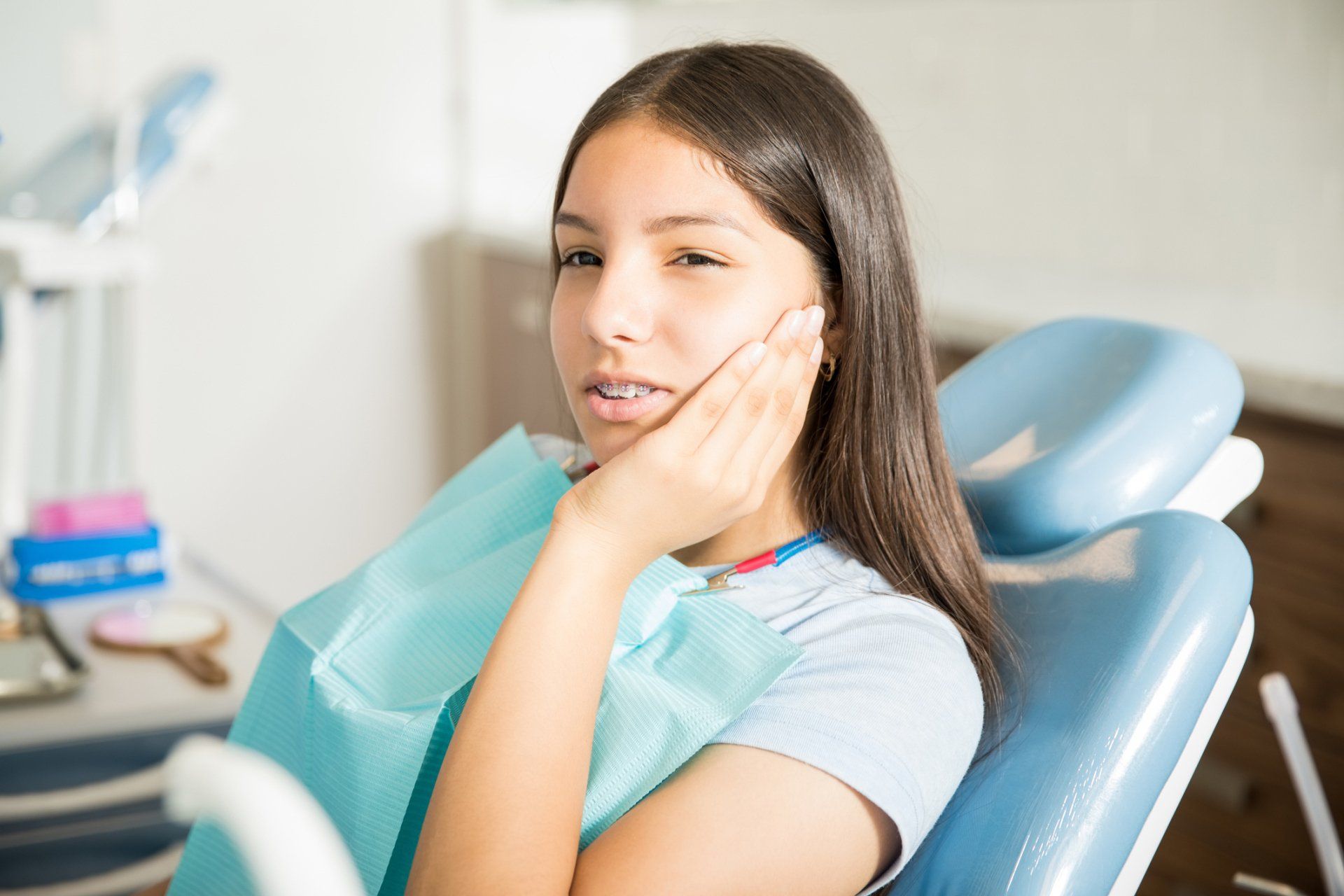General Orthodontic Emergencies at Home

Slide title
Write your caption hereButton
At Welton Orthodontics, we educate our patients in order to make their experience as stress-free as possible. Many common orthodontic “emergencies” and issues can be handled easily at home. To help you accurately describe an emergency to the orthodontist, use the information below to address any problems you’re experiencing. Feel free to call us with any questions if you’re unsure about your specific issue, (801) 446-1110.
- Tooth is Knocked Out
- Do not clean or scrub any part of the tooth
- Call your orthodontist or your dentist immediately to inform them of what has happened
- Always hold the enamel end of the tooth, not the root
- If possible, put the tooth back in the socket and hold in place with gauze or washcloth
- If you can’t place the tooth back in a sock, place the tooth in a container of milk or saline solution
- Apply an ice pack to the affected soft tissue area to reduce swelling
- Do not let the tooth dry out
- A tooth can often be saved if cared for properly and re-implanted within an hour
- Bracket is Loose or Detached
- Brackets can become loose as a result of chewing on hard, sticky, or chewy foods or objects as well as from physical contact from sports or roughhousing
- Brackets are the parts of braces attached to teeth with a special adhesive. If the bracket is off-center and moves along the wire, the adhesive has likely failed. Call your orthodontist, who will determine the course of action
- If the loose bracket has rotated on the wire and is sticking out, attempt to turn it back into its normal position and call your orthodontist to schedule an appointment to have it reattached
- Orthodontic wax can be placed around the area to minimize the movement of the loose brace. If you are in pain, please call your orthodontist and inform them of the circumstance
- Archwire is Poking
- If the end of an orthodontic archwire is poking in the back of the mouth, attempt to put wax over the area to protect the cheek, then call the orthodontist to schedule an appointment.
- In a situation where the wire is extremely bothersome and the patient will not be able to see the orthodontist immediately, as a last resort, the wire can be clipped with fingernail clippers.
- Reduce the possibility of swallowing the snipped piece of wire by using folded tissue or gauze around the area to catch the piece you will remove. Relief wax may still be necessary to provide comfort to the irritated area.
- Loose Brackets, Wires & Bands
If the braces have come loose in any way, call the orthodontist to determine appropriate next steps. Save any pieces of your braces that break off and bring them with you to your repair appointment.
- Irritation of Lips & Cheeks
A small amount of orthodontic wax makes an excellent buffer between the braces and lips, cheek, or tongue. Simply pinch off a small piece and roll it into a ball the size of a small pea. Flatten the ball and place it completely over the area of the braces causing irritation. If possible, dry off the area first as the wax will stick better. If the wax is accidentally swallowed it's not a problem. The wax is harmless.
- Mouth Sores
People who have mouth sores during orthodontic treatment may gain relief by applying a small amount of topical anesthetic (such as Orabase or Ora-Gel) directly to the sore area using a cotton swab. Reapply as needed.
- Discomfort
It's normal to have discomfort for three to five days after braces or retainers are adjusted. Although temporary, it can make eating uncomfortable, so we encourage soft foods. Rinse the mouth with warm saltwater and take over-the-counter pain relievers like acetaminophen or ibuprofen.
- Lips is Caught on Braces
Apply ice to the affected area until you have the opportunity to be seen by your orthodontist or family dentist.
- Can’t Open Mouth
Potential causes are problems with the lower jaw joint or swelling around the soft tissues in the mouth. Call your orthodontist or dentist and inform them of your symptoms.
- Food Caught Between Teeth
It can be resolved with a piece of dental floss. Try tying a small knot in the middle of the floss to help remove the food. Or use an interproximal brush to dislodge food caught between teeth and braces.
- Orthodontic Supplies to Keep On Hand
- Non-medicated orthodontic relief wax
- Dental floss
- Sterile tweezers
- Small, sharp clippers suitable for cutting wire (such as a fingernail clipper)
- Q-tips
- Salt
- Interproximal brush
- Non-prescription pain reliever (acetaminophen or ibuprofen or any over-the-counter medication typically used for a headache)
- Oral topical anesthetic (such as Orabase or Ora-Gel)





